It’s the fish identification guide you’ve been waiting for! If you’re still undecided on your catch after reading Types of Game Fish in Wisconsin (Part 1), check out our next list of common game fish found in Wisconsin below.
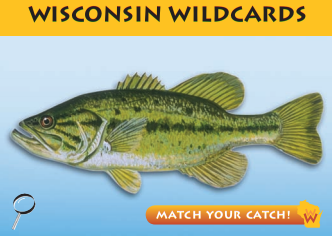
1. LARGEMOUTH BASS
Also known as “Bucketmouth,” the largemouth bass has a big mouth with an upper jaw that extends beyond its eye. If you’re fishing near lily pads, docks or weed beds, and catch a fish with a prominent line on its side and an indentation in its dorsal fin, you might have caught a largemouth! Fishing in weedy areas is risky though, so make sure you use a weedless bait or you may lose your lure!
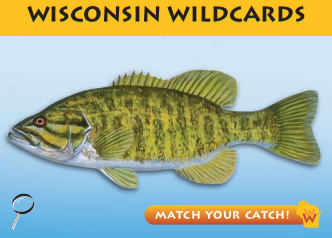
2. SMALLMOUTH BASS
Shhh! The secret to catching smallmouth bass is to fish quietly near old logs or rocks. But how do you know if you’ve caught one? If the fish has vertical markings, a shallow indentation in its dorsal fin and an upper jaw that ends in line with the center of its red eye, congrats! You’ve caught a smallmouth bass. Pro tip: the easiest way to tell a small- from a largemouth bass is the size of their mouth! Small’s mouth ends in the middle of its eye and large’s mouth extends past its eye.
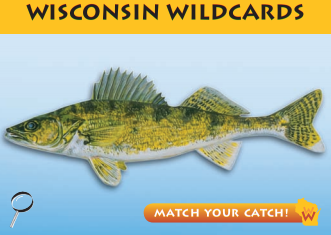
3. WALLEYE
Walleye have unique features that make them easy to identify including a white triangular mark on their tail fin and large eyes that help them see well in low light. You can find these large-eyed fish in clear-water lakes or large river systems. Want to catch one? Try casting out minnows, leaches, night crawlers or small plugs.
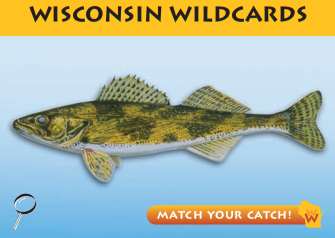
4. SAUGER
If you think you’ve caught a walleye but see a polka-dotted dorsal fin instead of white triangular mark on their tail fin, chances are it’s a sauger. Sauger are also smaller in size and have black and rusty blotches on their sides. Commonly found in the Lake Winnebago-Fox River system, these fish like waters that are muddy and dark.
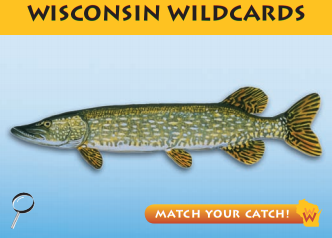
5. NORTHERN PIKE
A favorite among ice fishing enthusiasts, northern pike are large predatory fish that spawn along marshy shorelines or marshy streams flowing into lakes. These fish have horizontal, “bean-like” markings, a rounded tail fin, and scales on the lower part of their gill covers. A hungry northern pike will bite on almost anything that swims its way, but remember to use a steel leader and keep your bait moving!
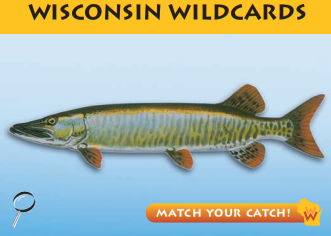
6. MUSKELLUNGE (MUSKY)
The muskellunge is Wisconsin’s state fish (and the largest predator fish in the state!). Known as a ferocious fighter, these fish are easiest to catch with some big bait like jerk baits, spoons and bucktails! Musky and northern pike may look alike, but musky have wide, vertical markings and do not have scales on the lower part of the gill cover like the northern pike does.
Whether you’re a professional angler or just starting out, having a basic knowledge of the types of fish in Wisconsin can be helpful. Learning your freshwater fish identification helps you share your passion with fellow anglers and is also important when it comes to state regulations. Before you start catching fish, renew your fishing license and pick up a copy of the Wisconsin fishing regulations so you know just how many fish you can catch!
